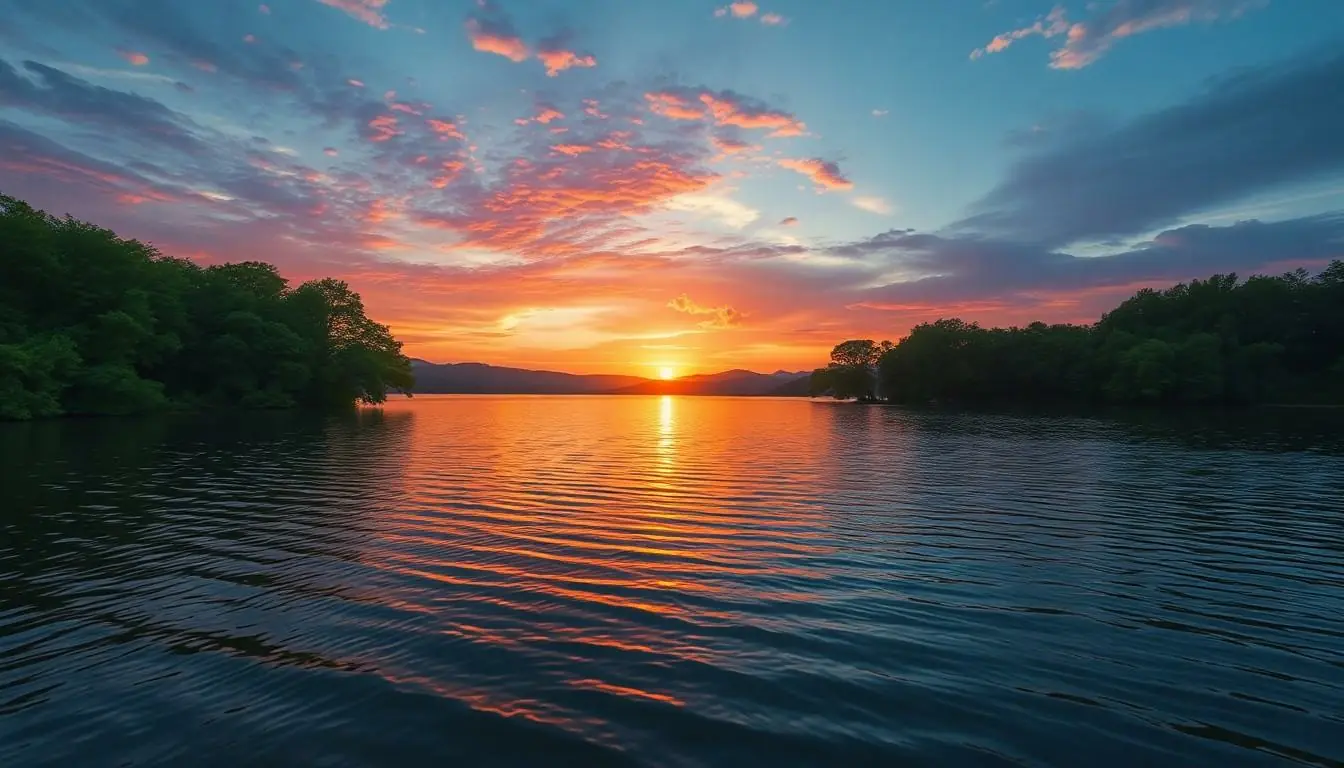In the world of creative writing, images aren’t just pretty pictures—they’re the secret sauce that transforms ordinary prose into extraordinary storytelling. Imagine your readers diving into a narrative so vivid they can practically smell the coffee brewing in the corner café. That’s the power of visual storytelling, and it’s time to harness it.
Table of Contents
ToggleUnderstanding Creative Writing Images
Creative writing images enrich narratives and engage readers through visual storytelling. These images evoke emotions, stimulate imagination, and help craft immersive experiences.
Definition of Creative Writing Images
Creative writing images refer to descriptive language that paints vivid pictures in the reader’s mind. They encompass metaphors, similes, and sensory details, forming connections with the audience. An example includes comparing a sunset to a painter’s pink and orange brush strokes. These images create a strong sense of place and depth, allowing readers to visualize scenes clearly and develop an emotional connection with the text.
Importance in Creative Writing
Images significantly enhance the impact of creative writing. They draw readers into the narrative, making it easier to relate to characters and situations. Vivid imagery allows readers to feel emotions tied to the story, fostering empathy and engagement. Research shows that stories incorporating strong sensory details are more memorable. When writers utilize creative writing images, they elevate their prose, ensuring a lasting impression on their audience.
Types of Creative Writing Images

Creative writing images enhance the richness of prose, creating deeper connections with readers. Various types of imagery serve to immerse audiences within narratives.
Visual Imagery
Visual imagery creates vivid mental pictures, allowing readers to visualize characters and settings. Writers use descriptive adjectives and strong nouns to evoke colors, shapes, and movements. For instance, describing a sunset as “a brilliant canvas of orange and pink” helps readers picture the scene. Effective visual imagery immerses the audience in details that enhance their understanding and enjoyment of the story.
Auditory Imagery
Auditory imagery captures sounds, adding another layer to the storytelling experience. Writers employ onomatopoeia, alliteration, and sensory descriptors to evoke sounds. For instance, phrases like “the whispers of leaves in the breeze” create auditory experiences that enhance emotional resonance. Engaging auditory imagery allows readers to hear the world within the narrative, enriching their overall immersion.
Kinesthetic Imagery
Kinesthetic imagery describes movement and physical sensations, bringing a sense of action to creative writing. Writers depict characters’ movements, emotions, and physical interactions to evoke feelings of motion. For example, phrases like “he felt the thrill of sprinting through the rain” stimulate a visceral response. This type of imagery fosters a deeper connection with characters, making their experiences more relatable and impactful.
Techniques for Creating Effective Images
Creative writing achieves effectiveness through various techniques that enhance imagery and engage readers.
Use of Descriptive Language
Descriptive language brings stories to life, using vivid adjectives and specific nouns to paint a clear picture. Authors choose strong verbs that convey action and evoke emotion. Characters come alive through detailed descriptions, allowing readers to visualize their traits and mannerisms. Settings grow richer when described with attention to color, texture, and scale, fostering immersion in the narrative. For example, instead of stating a room is “messy,” describing it as “cluttered with old books and half-empty coffee cups” creates a more vivid mental image. Such precision makes narratives resonate with readers on a deeper level.
Incorporating Sensory Details
Sensory details play a vital role in enriching narratives, engaging multiple senses for a more immersive experience. Writers evoke sight, sound, taste, touch, and smell to create a holistic atmosphere. By describing the sound of rustling leaves or the aroma of fresh bread, authors draw readers into the environment. Effective use of emotions through these details creates connections that resonate on an emotional level. For instance, instead of simply mentioning rain, detailing “the soft patter of raindrops against the windowpane” conveys mood and setting simultaneously. This technique enhances the depth of storytelling, allowing readers to feel a part of the action.
Examples of Creative Writing Images
Creative writing images manifest vividly through various literary works. They enrich narratives and draw readers into different worlds.
Classic Literature
Classic literature showcases imagery that transports readers to different eras. In “Moby-Dick,” Herman Melville uses rich visual details to portray the vastness of the ocean and the complexity of its creatures. Descriptive passages like “the rolling waves glimmered in the pale moonlight” create a striking image that lingers. Similarly, in “Pride and Prejudice,” Jane Austen paints society through her depiction of ballrooms filled with elegant dresses and lively conversation. The intricate details evoke vivid images, allowing readers to visualize the social dynamics of the Regency era.
Contemporary Works
Contemporary works also utilize creative imagery effectively. In “The Night Circus,” Erin Morgenstern creates a magical atmosphere through sensory descriptions, such as “the sweet scent of caramel wafted through the air.” This detail stimulates the reader’s senses, immersing them in the enchanting world. Furthermore, in “The Road,” Cormac McCarthy employs stark imagery to depict a post-apocalyptic landscape. Descriptions like “crumbling buildings and ash-covered ground” provide a haunting visual that enhances the bleakness of the narrative. These examples illustrate how modern writers continue to use imagery to captivate readers and evoke profound emotions.
Creative writing images are essential tools that elevate storytelling to new heights. They invite readers into vivid worlds where emotions and experiences come alive. By mastering the art of imagery, writers can create connections that resonate deeply with their audience.
Whether through visual, auditory, or kinesthetic imagery, the right words can transform a simple narrative into an unforgettable journey. As demonstrated by both classic and contemporary literature, the power of imagery lies in its ability to evoke feelings and stimulate the imagination.
Ultimately, the skillful use of creative writing images not only enhances prose but also leaves a lasting impression that lingers long after the last page is turned. Writers who embrace this technique will find their stories more impactful and engaging.





